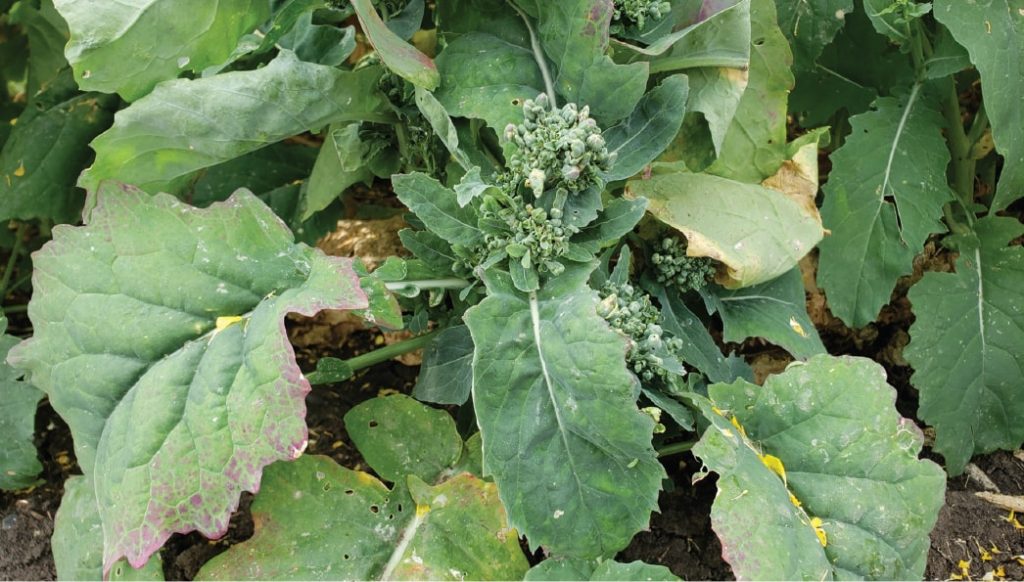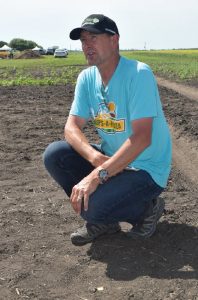Agronomy Insights
Five IPM discoveries from CDF 2019
CCC agronomy specialist Justine Cornelsen was the lead organizer for Canola Discovery Forum 2019, which was in Winnipeg in November. The event theme focused on the integrated pest management (IPM) pillar from the CCC’s strategic plan. The pillar goal is to gain 2 bu./ac. from improved pest management by the year 2025. The following are Cornelsen’s top five forum discoveries – including some that could contribute immediately to the goal and some that are more long-term:
1. Patch management for clubroot control
Clubroot management is focused on reducing the number spores within the field. Mary Ruth McDonald, professor at University of Guelph, has been assessing practical ways to isolate and control clubroot patches within a field. When patches are located in a canola field, her recommendation is to pull plants outward in a circle until you no longer pull up clubbed roots. The roots from these plants must be destroyed, and that area should be sown to a non-brassica cover crop. Once the cover crop is established, no equipment should move throughout the area so resting spores cannot be transferred out. After a two- to three-year period, the spore levels in the soil should have decreased but diligent scouting and pulling up of plants in and around the patch remains important.
2. Hairy canola to disrupt flea beetle feeding
This isn’t the first time hearing about “hairy” canola. Agriculture and Agri-Food Canada research scientist Dwayne Hegedus explained how hairy canola deters flea beetles and why this technology is not in farmer’s fields. During feeding, flea beetles will circle on the leaf but if this circling process is interrupted, they will leave the plant. When trichomes (hairs) are produced on young brassica plants, this is enough to disrupt the flea beetles and deter them from feeding on the plant. Previous attempts to introduce this trait into canola required two transgenic events to first develop the trichomes, and secondly to fix developmental issues with producing a strong hairy brassica species. With the cost associated with development and registration of transgenic products, hairy canola remained on the shelf. However, current producer-funded (CARP) projects have identified non-transgenic sources of the trait and are currently being integrated into canola lines.
3. RNAi technologies to control pests
Steven Whyard, professor at the University of Manitoba, introduced the idea of gene specific double-stranded RNA (dsRNA) as a means to control pests. With species-specific dsRNA pesticides, no harm is seen in other species such as beneficial insects. Whyard’s lab has shown effective control of flea beetles and sclerotinia stem rot in canola with the use of RNAi tools through both foliar sprays and transgenic plants. This type of technology will provide diversity in crop protection options.
4. The mysterious case of aster yellows
Aster yellows is caused by a phytoplasma – an unculturable bacteria and obligate parasite. Aster yellows affects the plant hormones and transforms the floral parts of the plant into leaf-like structures and causes bladder-like pods. Tyler Wist, Agriculture and Agri-Food Canada research scientist, explained that aster yellows is a unique disease as the phytoplasma can only survive within the plant or through its vector, the aster leafhopper. While observing aster yellows symptoms across the Prairies in 2019, Wist and others wonder whether leaf hoppers are bringing in the phytoplasma from the south or picking it up locally from disease reservoirs like alfalfa and moving it around.

5. Crop rotation decisions – dollars and sense
We all know that a diverse crop rotation can minimize pest pressure. Retired Alberta Agriculture oilseed specialist Murray Hartman shared his insights around the economics of managing pests. Hartman highlighted that longer rotations mean lower disease incidence, severity and yield loss. Short rotations with less crop diversity may be easier to manage in the short term but increase the risk of pesticide and genetic resistance, a risk that can difficult to quantify economically.
Last minute seed decisions? Check CPTs
Results for the 2019 Canola Performance Trials are available online at canolaperformancetrials.ca. Read the PDF report or use the online searchable database, both of which are found on the homepage of the site. CPTs use small plot trials to compare varieties based on yield, days to maturity, height and lodging scores. Data is also organized by location and season zones (short, mid and long). Field scale trials compare yields.
Enter seed weight into calculator to get seeding rate
The seeding rate and seed cost calculator at canolacalculator.ca will help farmers set an appropriate seeding rate based on the thousand seed weight (TSW) of a seed lot along with their target plant density and estimated emergence percentage.
www.canolacalculator.ca/seeding-rate
Enter seed weight into calculator to get seeding rate
The calculator also provides a seed cost per acre based on the seeding rate and seed cost per pound. With the seed cost calculator, farmers can see the economic impact of factors such as seed size, percent emergence and target plant density.
 The calculator also has a target plant density tool that suggests a target plant density based on a farmer’s own assessment of the risk factors that stress canola stands post-emergence. These factors include stand uniformity, early season frost risk, weed control, in-season insect damage and length of the growing season.
The calculator also has a target plant density tool that suggests a target plant density based on a farmer’s own assessment of the risk factors that stress canola stands post-emergence. These factors include stand uniformity, early season frost risk, weed control, in-season insect damage and length of the growing season.
The CCC recommends a target plant density of five to eight plants per square foot (50–80 per square metre) at the two- to four-leaf stage. Growers can use the target density calculator to determine where in that range they want their individual fields to be, and then use the seeding rate and seed cost calculator to measure the economic impact of that density. Under three to four plants per square foot, canola shows a drop in yield stability, predictability and average. Extra plants provide some buffer for in-season plant losses, optimum maturity and competition with weeds.
Register for Seeder & Sprayer College
 This all-day practical educational event, to be held March 25 at the Keystone Centre in Brandon, Man., is a follow up to the popular 2019 Combine College. Attendees choose from 12 different expert-led breakout sessions, network in the Aftermarket & Equipment showcase, and take in two keynote speakers, including Tom Wolf (@nozzle_guy) of Agrimetrix Research and Training. Session topics include variable rate seeding, phosphorous 4R strategies, nozzle selection, dealing with sprayer rinsate, optimizing planters across the rotation, novel weed control technology, preparing the seedbed in 2020 and more. Members of the Manitoba Canola Growers, Manitoba Corn Growers, Manitoba Wheat and Barley Growers, and/or National Sunflower Associations qualify for a post event rebate of $20 per association. Please check the associations that you are a member of during the on-line registration process. The link for registration is at canolacouncil.org in the Events section under the “What we do” tab.
This all-day practical educational event, to be held March 25 at the Keystone Centre in Brandon, Man., is a follow up to the popular 2019 Combine College. Attendees choose from 12 different expert-led breakout sessions, network in the Aftermarket & Equipment showcase, and take in two keynote speakers, including Tom Wolf (@nozzle_guy) of Agrimetrix Research and Training. Session topics include variable rate seeding, phosphorous 4R strategies, nozzle selection, dealing with sprayer rinsate, optimizing planters across the rotation, novel weed control technology, preparing the seedbed in 2020 and more. Members of the Manitoba Canola Growers, Manitoba Corn Growers, Manitoba Wheat and Barley Growers, and/or National Sunflower Associations qualify for a post event rebate of $20 per association. Please check the associations that you are a member of during the on-line registration process. The link for registration is at canolacouncil.org in the Events section under the “What we do” tab.
Paloozas 2020
Mark your calendars for these outdoor interactive agronomy events in Alberta, Saskatchewan and Manitoba.
Alberta canolaPALOOZA
July 8, AAFC Research Centre, Lacombe
Saskatchewan CanolaPalooza
July 14, Saskatoon.
New for 2020, SaskCanola offers a Top Notch Farming Diagnostics option to provide more directed learning, diagnostic tips, and CCA credits.
Manitoba Crops-A-Palooza
July 28, Carberry





